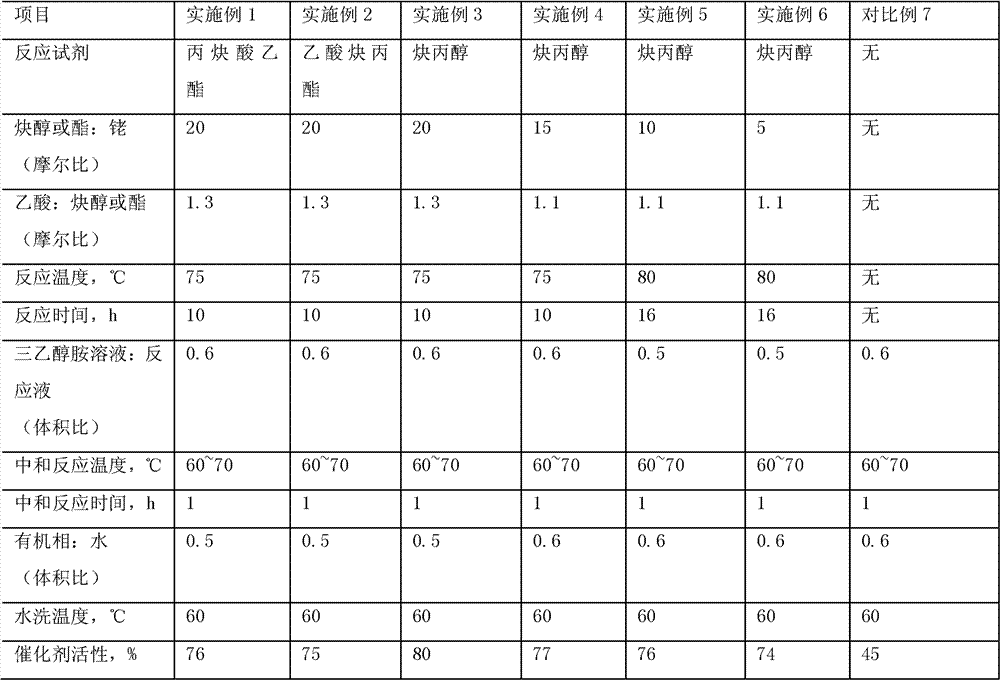Regeneration method for inactivated rh-p (rhodium-phosphine) complex catalyst for carbonylation reaction
A technology of carbonylation reaction and complexes, which is applied in the field of regeneration of deactivated rhodium-phosphine complex catalysts in carbonylation reactions, to achieve the effects of easy industrialization, reduced dosage, and improved catalyst activity
- Summary
- Abstract
- Description
- Claims
- Application Information
AI Technical Summary
Problems solved by technology
Method used
Image
Examples
Embodiment 1~6 and comparative example 7
[0035] In the butyraldehyde reaction liquid produced by the industrial butanol unit, the activity of the rhodium catalyst has been reduced from 100% to about 25% of the fresh catalyst. After removing part of the butyraldehyde, the rhodium content is about 1100mg / kg, and the triphenylphosphine content is about 10%. . Add 50 g of the reaction solution containing the partially deactivated catalyst into a 100 ml reactor, purging the reactor with nitrogen, and then adding acetylenic alcohols or esters containing 3 to 6 carbon atoms in different proportions as shown in Table 1 React with carboxylic acid, add 10% triethanolamine aqueous solution into the reactor after the reaction, neutralize unreacted carboxylic acid or halide, and generate water-soluble salt.
[0036] After the neutralization reaction is finished, two distinct liquid phases are formed by static settling, which are separated to obtain an organic phase containing an aqueous phase and a rhodium complex catalyst. The ...
PUM
 Login to View More
Login to View More Abstract
Description
Claims
Application Information
 Login to View More
Login to View More - R&D
- Intellectual Property
- Life Sciences
- Materials
- Tech Scout
- Unparalleled Data Quality
- Higher Quality Content
- 60% Fewer Hallucinations
Browse by: Latest US Patents, China's latest patents, Technical Efficacy Thesaurus, Application Domain, Technology Topic, Popular Technical Reports.
© 2025 PatSnap. All rights reserved.Legal|Privacy policy|Modern Slavery Act Transparency Statement|Sitemap|About US| Contact US: help@patsnap.com

